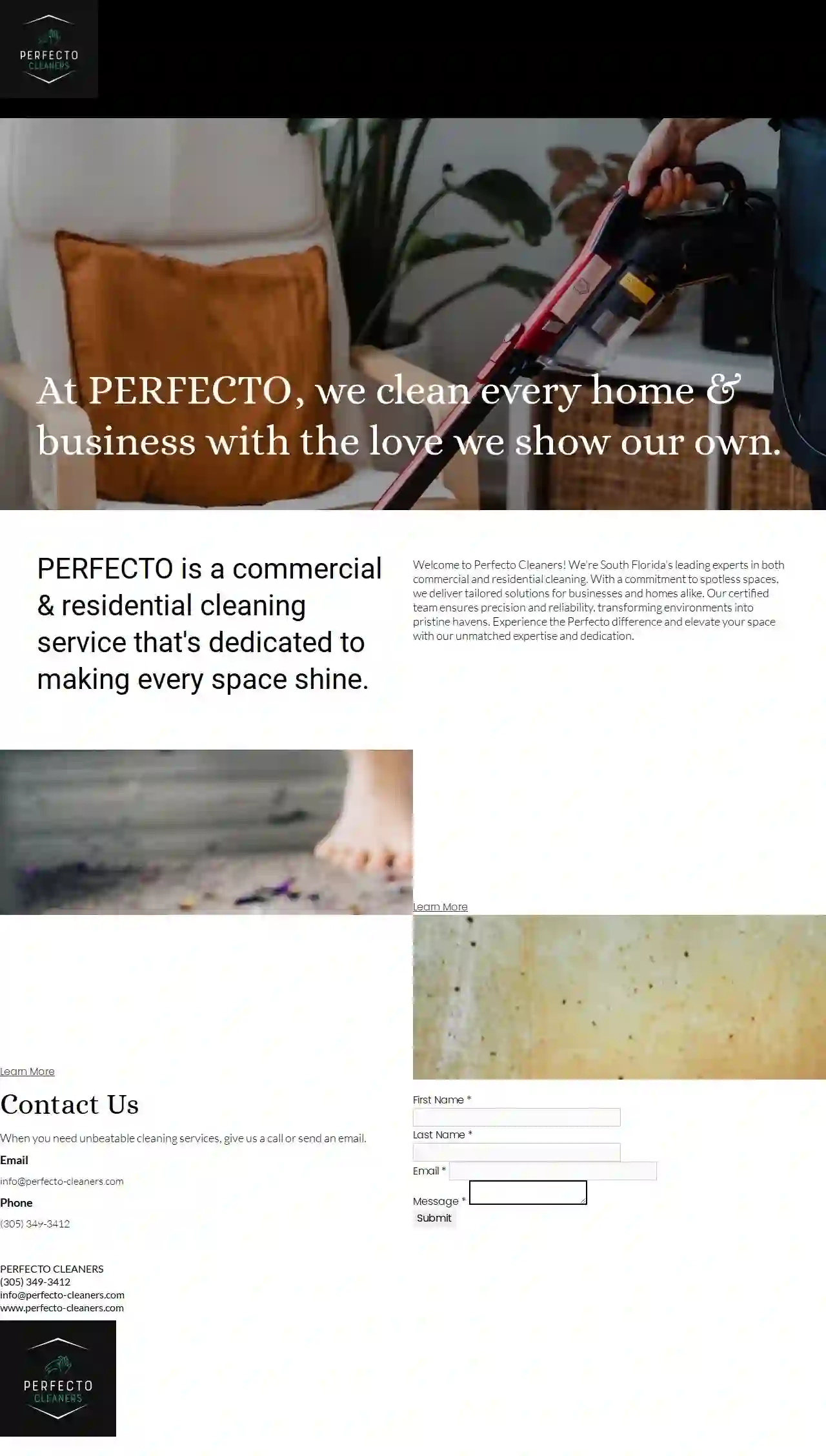Cleaning Services Buenaventura Lakes
Top 10 Cleaning in Buenaventura Lakes
Receive 3 FREE Professional Cleaners quotes for your project today! Compare profiles, reviews, accreditations, portfolio, etc... and choose the best offer.

Quality Plus Building Services
528 reviews1000 Wilshire Blvd, Los Angeles, 90001, USQuality Plus Cleaning LA is a professional cleaning service dedicated to providing exceptional cleaning solutions for residential and commercial clients in Los Angeles. With years of experience and a team of highly trained cleaners, we strive to exceed your expectations by delivering spotless results and a healthy, hygienic environment. Our comprehensive range of services includes: Residential Cleaning Commercial Cleaning Move-In/Move-Out Cleaning Deep Cleaning Window Cleaning Carpet Cleaning Post-Construction Cleaning At Quality Plus Cleaning LA, we are committed to using eco-friendly cleaning products and practices to ensure the safety of your family, pets, and the environment. We are fully insured and bonded, providing you with peace of mind knowing that your property is in safe hands. Contact us today for a free quote and experience the Quality Plus difference.
- Services
- Why Us?
Get Quote
VHR THE CLEANING COMPANY
52 reviews10001, Rockville, 20171, USVHR LLC is a leading provider of comprehensive human resources solutions. With a proven track record of success, we partner with businesses of all sizes to optimize their workforce and achieve their strategic goals. Our team of experienced HR professionals offers a wide range of services, including recruitment, talent management, compensation and benefits, employee relations, and compliance. At VHR LLC, we understand the complexities of today's business environment and the critical role that human capital plays in driving success. We are committed to providing our clients with innovative and customized solutions that meet their unique needs. Our mission is to empower businesses to build high-performing teams, foster a positive work environment, and achieve sustainable growth. We pride ourselves on our integrity, professionalism, and client-centric approach. Our goal is to build long-term relationships with our clients based on trust, transparency, and mutual success.
- Services
- Why Us?
Get Quote- Pa
Paramount Cleaning Solutions
51 reviews123 Main St, CityName, 12345, USParamount Cleaning Solutions is a professional cleaning service dedicated to providing top-notch cleaning solutions to its clients. With a strong commitment to quality and customer satisfaction, the company strives to ensure that every client receives exceptional service. Their team of experienced professionals is equipped with the latest cleaning technology and eco-friendly products to guarantee a sparkling clean environment.
- Services
- Why Us?
- Accreditations
- Our Team
- Testimonials
- Gallery
Get Quote 
Choice Services Commercial Cleaning
55 reviewsMiami, US- Services
- Why Us?
- Gallery
Get Quote
Perfecto Cleaners
510 reviewsHollywood, US- Services
- Why Us?
- Gallery
Get Quote
OTPS Commercial Cleaning Services
57 reviewsMiami, US- Services
- Why Us?
Get Quote- Cl
Clean & Clear Solutions LLC
59 reviewsDeltona, US- Services
- Why Us?
Get Quote 
Aire Serv of Palm Coast
5158 reviewsPalm Coast, US- Services
- Why Us?
Get Quote- Da
Dade Maid LLC
510 reviewsMiami, US- Services
- Why Us?
Get Quote - Cr
Crystal MerMaids Cleaning Service
528 reviewsNavarre, US- Services
- Why Us?
Get Quote
Over 60,241+ Janitorial Services in our network
Our janitorial companies operate in Buenaventura Lakes and beyond!
CleaningMatch has curated and vetted Top Cleaning Services in and around Buenaventura Lakes. Find a top & trustworthy business today.
Frequently Asked Questions About Cleaning Services
- Weekly: Suitable for busy households with children or pets, ensuring a consistently clean and healthy environment.
- Bi-weekly: A good option for smaller households or those who maintain a relatively clean home.
- Monthly: May be sufficient for individuals or couples who live a minimalist lifestyle.
- Quarterly or Annually: Can be suitable for deep cleaning or seasonal cleaning tasks.
- White Vinegar: A versatile cleaner that cuts through grease, removes stains, and deodorizes. Mix equal parts water and vinegar for a general-purpose cleaner.
- Baking Soda: A natural abrasive and deodorizer. Sprinkle baking soda on surfaces, let it sit, then scrub and rinse.
- Lemon Juice: Acts as a natural bleaching agent and disinfectant. Mix lemon juice with water for a cleaning solution or use it directly on stains.
- Castile Soap: A gentle and biodegradable soap made from plant oils. Mix a few drops of castile soap with water for a versatile cleaning solution.
- Essential Oils: Add a few drops of essential oils like tea tree oil or lavender oil to cleaning solutions for a natural fragrance and antibacterial properties.
- Ventilation: Open windows and turn on the exhaust fan to improve air circulation.
- Declutter: Remove any items from countertops, the shower, and the floor to allow easy access.
- Pre-treat: Spray shower walls, tub, and toilet bowl with bathroom cleaner and let it sit for a few minutes to break down grime.
- Toilet: Scrub the toilet bowl with a toilet brush, paying attention to the rim and under the seat. Wipe down the exterior of the toilet with a disinfectant wipe.
- Shower/Tub: Scrub the shower walls and tub with a sponge or scrub brush. Rinse thoroughly.
- Sink: Clean the sink with a sponge or cloth and bathroom cleaner. Pay attention to the faucet and drain.
- Mirrors and Glass: Wipe down mirrors and glass surfaces with a glass cleaner and a microfiber cloth for a streak-free finish.
- Floors: Sweep or vacuum the floor, then mop with a floor cleaner designed for your bathroom floor type.
- Finishing Touches: Empty the trash can, replace towels, and put away any toiletries.
- Declutter first: Before cleaning, declutter surfaces and remove any items that don't belong. This makes cleaning easier and prevents distractions.
- Gather your supplies: Assemble all your cleaning supplies, including cleaners, cloths, sponges, and a trash bag, in a caddy or bucket to avoid wasting time searching for them.
- Work from top to bottom: Start cleaning from the top of each room and work your way down to prevent dust and debris from falling on already cleaned surfaces.
- Focus on high-traffic areas: Pay extra attention to high-traffic areas like kitchens and bathrooms, where dirt and germs accumulate quickly.
- Use the right tools: Utilize appropriate cleaning tools for different surfaces and tasks. Microfiber cloths are effective for dusting and cleaning glass, while scrub brushes are ideal for tough stains.
- Clean in sections: Break down larger tasks into smaller sections to avoid feeling overwhelmed. Focus on one area at a time before moving on to the next.
- Establish a routine: Create a regular cleaning schedule and stick to it. This prevents dirt buildup and makes cleaning more manageable.
How often should I have my house cleaned?
You can adjust the frequency based on your needs and budget. Some people opt for weekly cleaning for high-traffic areas like kitchens and bathrooms and bi-weekly cleaning for the rest of the house.
What are some eco-friendly cleaning solutions?
Remember to test these solutions on a small, inconspicuous area first to ensure they don't damage delicate surfaces.
What is the best way to clean a bathroom?
By following these steps, you can maintain a clean and hygienic bathroom.
What are some tips for cleaning my own home efficiently?
By implementing these strategies, you can clean your home more efficiently and maintain a cleaner and healthier living space.
How often should I have my house cleaned?
- Weekly: Suitable for busy households with children or pets, ensuring a consistently clean and healthy environment.
- Bi-weekly: A good option for smaller households or those who maintain a relatively clean home.
- Monthly: May be sufficient for individuals or couples who live a minimalist lifestyle.
- Quarterly or Annually: Can be suitable for deep cleaning or seasonal cleaning tasks.
You can adjust the frequency based on your needs and budget. Some people opt for weekly cleaning for high-traffic areas like kitchens and bathrooms and bi-weekly cleaning for the rest of the house.
What are some eco-friendly cleaning solutions?
- White Vinegar: A versatile cleaner that cuts through grease, removes stains, and deodorizes. Mix equal parts water and vinegar for a general-purpose cleaner.
- Baking Soda: A natural abrasive and deodorizer. Sprinkle baking soda on surfaces, let it sit, then scrub and rinse.
- Lemon Juice: Acts as a natural bleaching agent and disinfectant. Mix lemon juice with water for a cleaning solution or use it directly on stains.
- Castile Soap: A gentle and biodegradable soap made from plant oils. Mix a few drops of castile soap with water for a versatile cleaning solution.
- Essential Oils: Add a few drops of essential oils like tea tree oil or lavender oil to cleaning solutions for a natural fragrance and antibacterial properties.
Remember to test these solutions on a small, inconspicuous area first to ensure they don't damage delicate surfaces.
What is the best way to clean a bathroom?
- Ventilation: Open windows and turn on the exhaust fan to improve air circulation.
- Declutter: Remove any items from countertops, the shower, and the floor to allow easy access.
- Pre-treat: Spray shower walls, tub, and toilet bowl with bathroom cleaner and let it sit for a few minutes to break down grime.
- Toilet: Scrub the toilet bowl with a toilet brush, paying attention to the rim and under the seat. Wipe down the exterior of the toilet with a disinfectant wipe.
- Shower/Tub: Scrub the shower walls and tub with a sponge or scrub brush. Rinse thoroughly.
- Sink: Clean the sink with a sponge or cloth and bathroom cleaner. Pay attention to the faucet and drain.
- Mirrors and Glass: Wipe down mirrors and glass surfaces with a glass cleaner and a microfiber cloth for a streak-free finish.
- Floors: Sweep or vacuum the floor, then mop with a floor cleaner designed for your bathroom floor type.
- Finishing Touches: Empty the trash can, replace towels, and put away any toiletries.
By following these steps, you can maintain a clean and hygienic bathroom.
What are some tips for cleaning my own home efficiently?
- Declutter first: Before cleaning, declutter surfaces and remove any items that don't belong. This makes cleaning easier and prevents distractions.
- Gather your supplies: Assemble all your cleaning supplies, including cleaners, cloths, sponges, and a trash bag, in a caddy or bucket to avoid wasting time searching for them.
- Work from top to bottom: Start cleaning from the top of each room and work your way down to prevent dust and debris from falling on already cleaned surfaces.
- Focus on high-traffic areas: Pay extra attention to high-traffic areas like kitchens and bathrooms, where dirt and germs accumulate quickly.
- Use the right tools: Utilize appropriate cleaning tools for different surfaces and tasks. Microfiber cloths are effective for dusting and cleaning glass, while scrub brushes are ideal for tough stains.
- Clean in sections: Break down larger tasks into smaller sections to avoid feeling overwhelmed. Focus on one area at a time before moving on to the next.
- Establish a routine: Create a regular cleaning schedule and stick to it. This prevents dirt buildup and makes cleaning more manageable.
By implementing these strategies, you can clean your home more efficiently and maintain a cleaner and healthier living space.